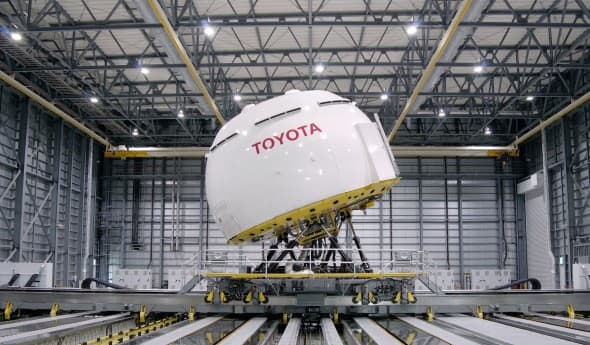Toyota’s Approach To Driverless Cars Involves A Guardian Angel
It’s inevitable that driverless or autonomous cars are our future. From tech giants like Google to car makers like Volvo are involved actively in making prototypes of driverless cars and testing them in the real world. Toyota has jumped into the bandwagon but with an entirely different approach. Instead of completely taking control over the car, Toyota is developing an invisible co-pilot that will take control of the car only in emergency situations. Toyota has invested a billion dollars in creating Toyota Research Institute (TRI). The CEO of TRI Gill Pratt announced the plans of creating the guardian angel program at a conference in San Jose today. He also announced the creation of a new TRI facility close to the University of Michigan in Ann Arbor. The new TRI facility will have a self-driving testing facility called the MCity where different driving scenarios will be tested.

The main challenge posed by this invisible co-pilot is the human driver. No one knows how a human would react to a machine taking over the car’s controls temporarily. That is why this technology will be tested in a giant moving simulator near Mt. Fuji. The moving simulator is housed inside a hangar roughly the size of two football fields. The simulator will take a human driver through realistic street scenes and simulate crash scenarios. This will help the researchers observe how humans respond when the car’s AI takes over the car controls.
CEO Pratt also announced that Toyota will also make some changes when it comes to the computing aspect of its guardian angel feature. Current self driving cars consume thousand of watts of energy that is why Toyota will use neuromorphic chips which computes data in parallel as compared to sequential in conventional computers.
Source: #-Link-Snipped-#

The main challenge posed by this invisible co-pilot is the human driver. No one knows how a human would react to a machine taking over the car’s controls temporarily. That is why this technology will be tested in a giant moving simulator near Mt. Fuji. The moving simulator is housed inside a hangar roughly the size of two football fields. The simulator will take a human driver through realistic street scenes and simulate crash scenarios. This will help the researchers observe how humans respond when the car’s AI takes over the car controls.
CEO Pratt also announced that Toyota will also make some changes when it comes to the computing aspect of its guardian angel feature. Current self driving cars consume thousand of watts of energy that is why Toyota will use neuromorphic chips which computes data in parallel as compared to sequential in conventional computers.
Source: #-Link-Snipped-#
0
